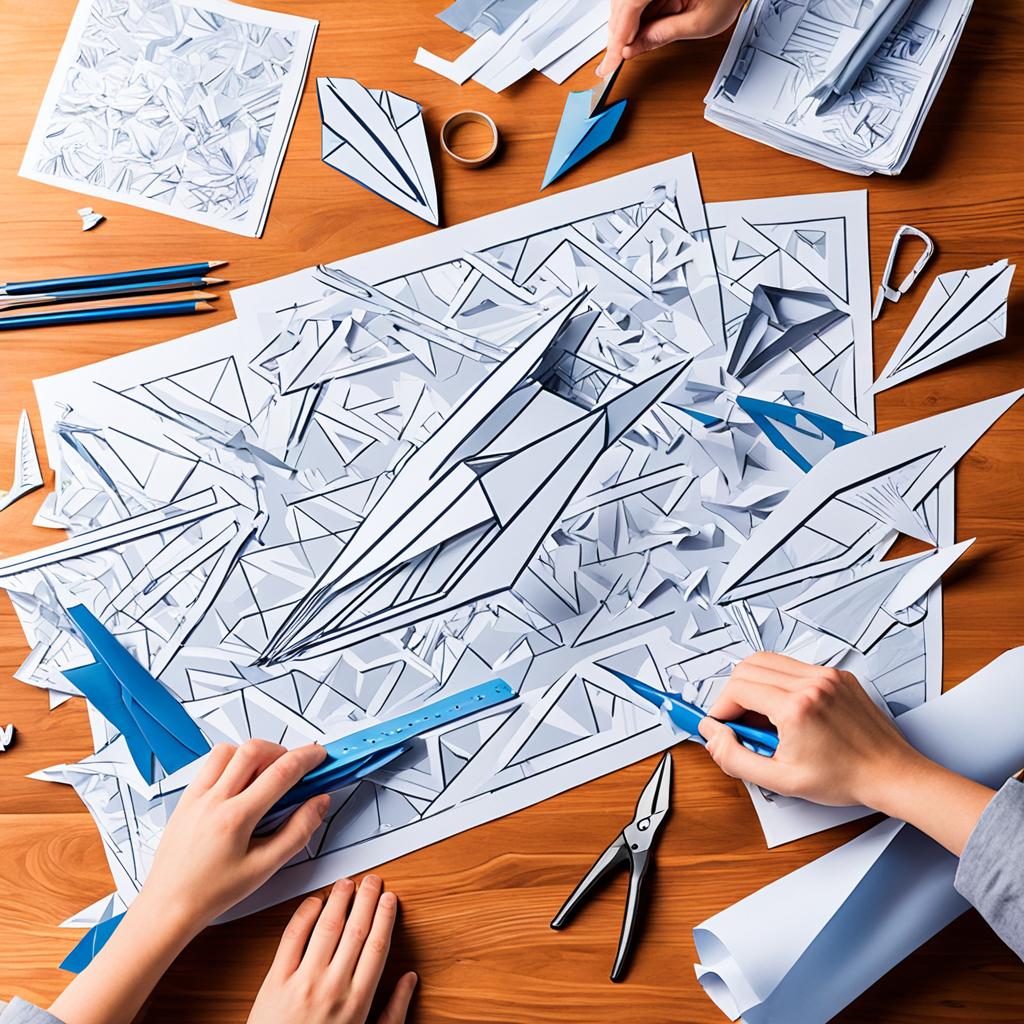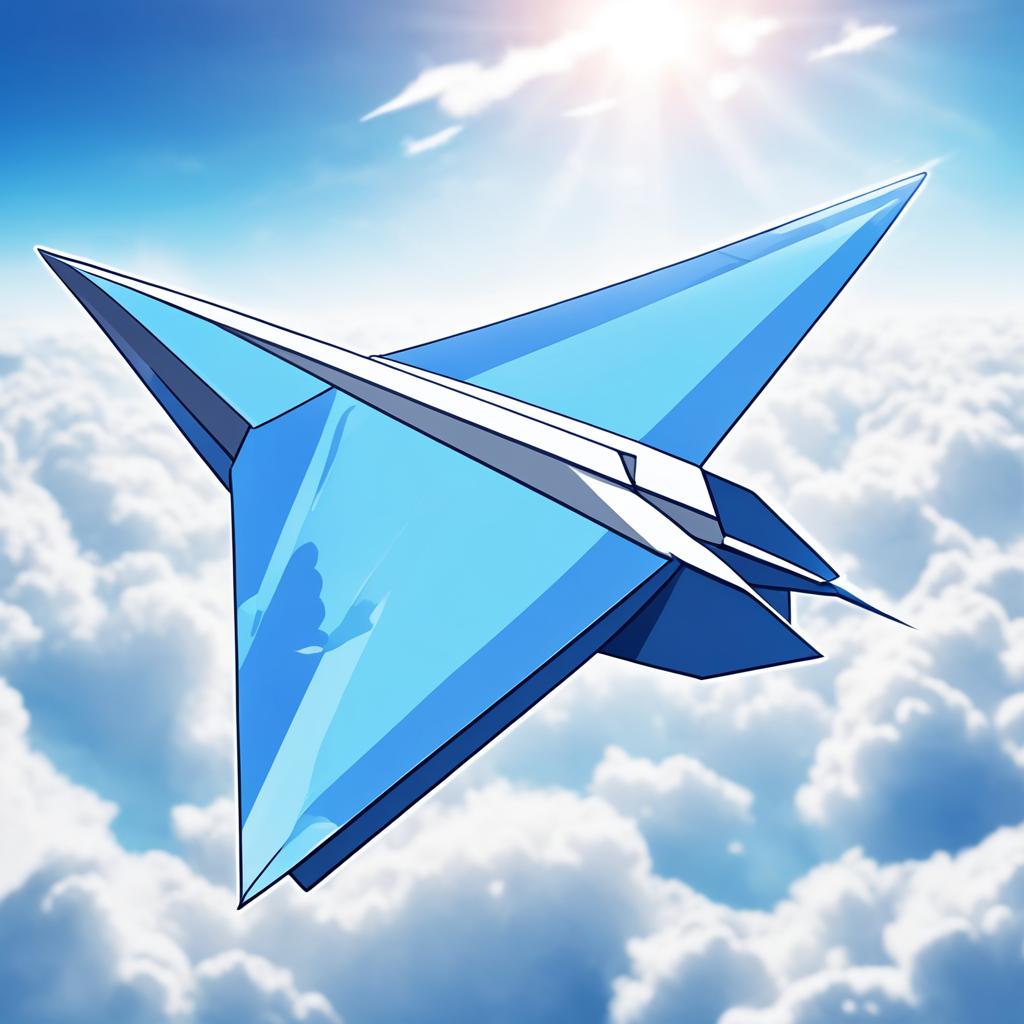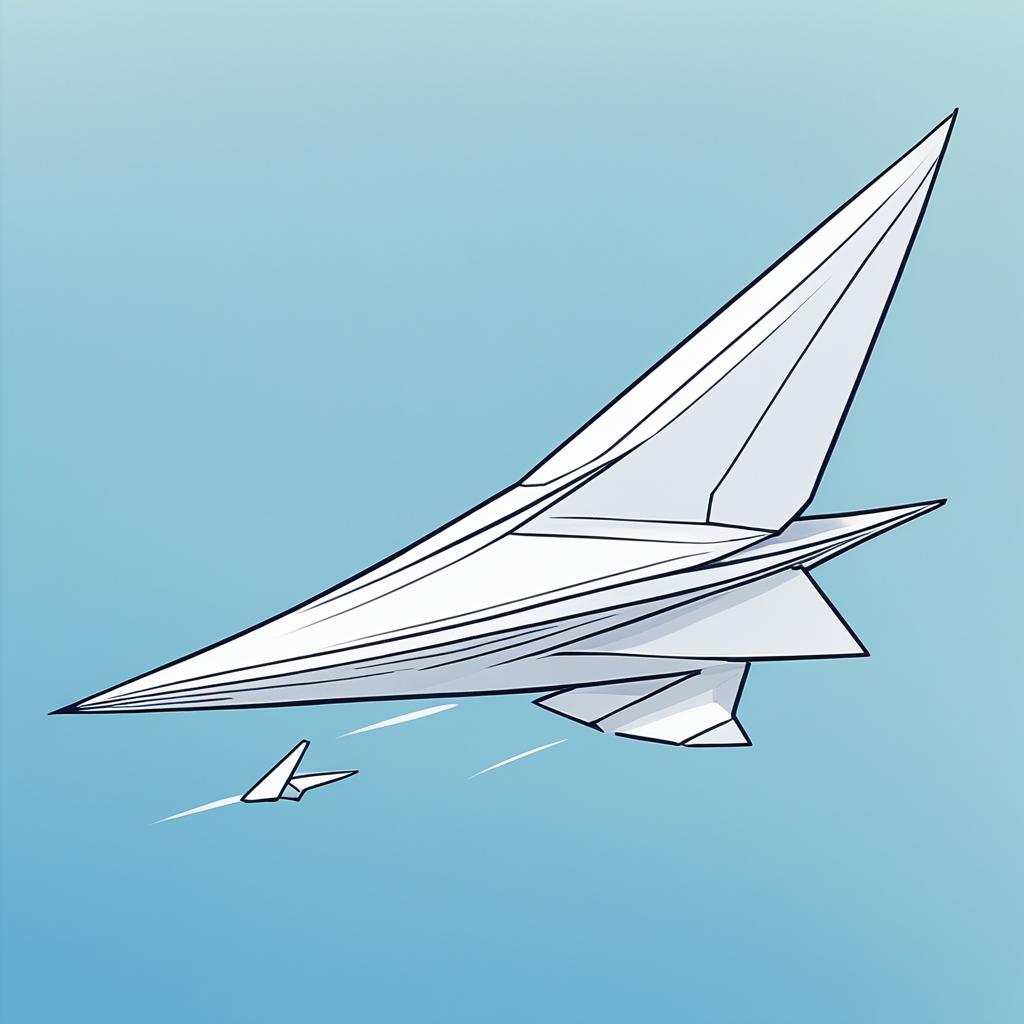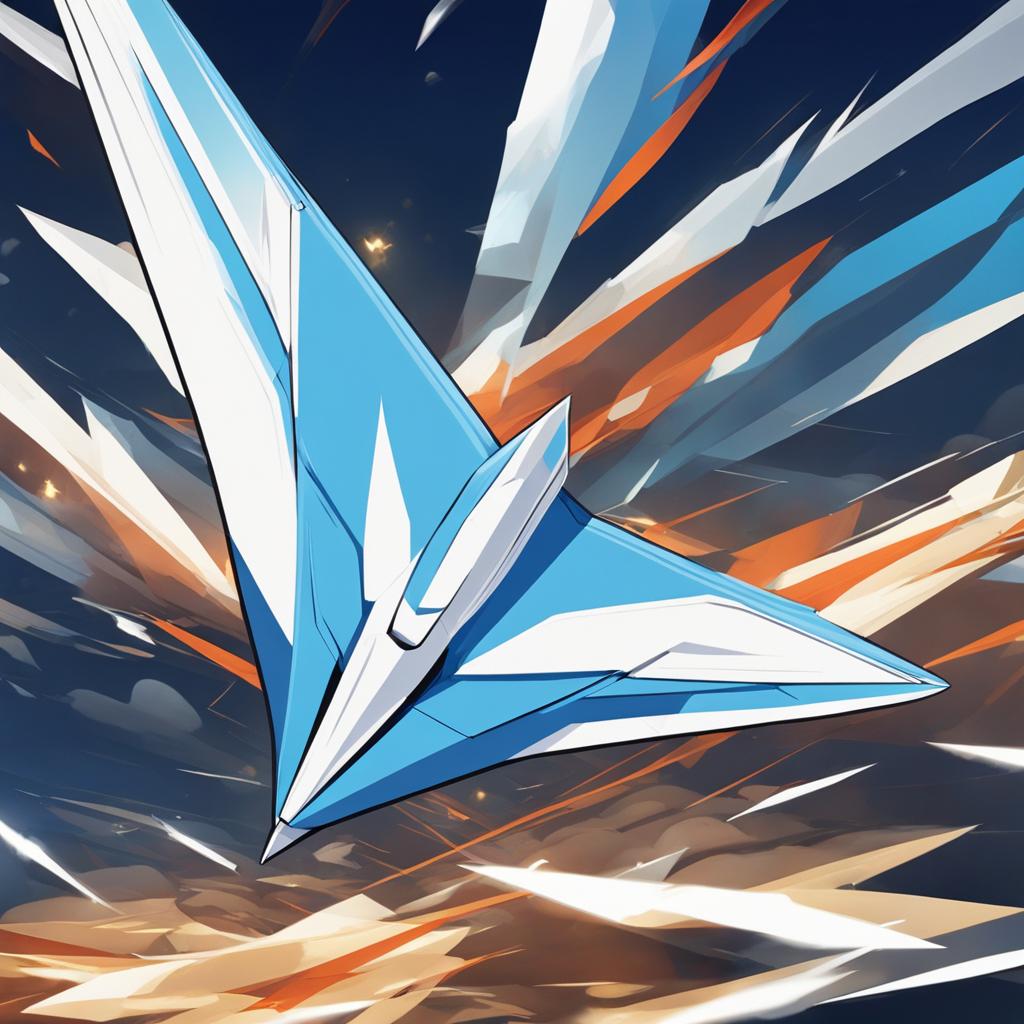Have you ever wondered what makes one paper airplane soar through the air while others barely make it off the ground? When it comes to achieving the best long distance flight, the design and aerodynamics of the paper airplane play a crucial role.
So, what is the secret to maximizing your flight distance? It’s all about maximizing wing area and lift. By folding your paper in specific ways to create a shape that maximizes lift while minimizing weight, you can unleash the full potential of your paper airplane.
The best long distance paper airplanes have large wing areas, allowing for maximum lift. These designs, such as the Albatross, Kingfisher, Seagull, Pelican, and Typhoon, offer unique features that enhance their flight capabilities.
Are you ready to take your paper airplane flights to new heights? Join us as we explore the top tips for folding long distance paper airplanes and discover the best designs for maximum flight distance, time aloft, and speed.
Tips for Folding Long Distance Paper Airplanes

Folding a paper airplane for long distance flight requires careful attention to detail. To optimize your paper airplane for maximum flight distance, consider the following tips:
- Choose the Right Paper: Start with a lightweight but sturdy paper such as standard printer paper or lightweight cardstock. Avoid using heavy or textured paper, as it can affect the flight performance.
- Maximize Wing Area: Increasing the wing area of your paper airplane can significantly improve its lift and flight distance. Experiment with folding techniques that create larger wing surfaces, such as the classic dart or delta wing design.
- Adjust Wing Flaps: Fine-tune the wing flaps of your paper airplane to optimize its stability and lift. Slightly bending the trailing edge of the wings upwards can help improve lift, while downward bends can increase stability during flight.
- Balance the Center of Gravity: Ensure that your paper airplane is properly balanced to maintain stability during flight. Adjust the position of the wings or add small folds at the front or back of the aircraft to achieve a balanced center of gravity.
- Smooth Folds and Sharp Edges: Neatly crease each fold of your paper airplane to create smooth surfaces and sharp edges. Smooth folds reduce aerodynamic drag, allowing the aircraft to glide through the air more efficiently.
- Experiment with Throwing Techniques: The way you launch your paper airplane can impact its flight distance. Experiment with different throwing techniques, such as launching at a slight upward angle or adjusting the speed and force of your throw.
- Tweak and Test: Don’t be afraid to make adjustments and test different folding variations. Keep a record of each design and measure the flight distance to determine which adjustments yield the best results.
Following these folding tips and techniques will help you create paper airplanes that can soar long distances with ease. Remember to have fun and enjoy the process of experimenting and fine-tuning your design for optimal flight performance!
Best Paper Airplane for Distance

When it comes to achieving the maximum distance in paper airplane flight, one design stands out – The Bird. The Bird is a versatile glider that is relatively easy to fold and can travel long distances when adjusted carefully.
To optimize the throw for distance, launch The Bird at a 45-degree upward angle with as much force as possible without causing deformation. Small adjustments to the backs of the wings can help fine-tune its flight trajectory.
The Bird has been tested and proven to travel distances of over 50 feet, making it the top choice for long distance paper airplane flights.
Best Paper Airplane for Time Aloft

If your goal is to achieve the longest possible flight time, the Stealth Glider is the best paper airplane design for you. Although it requires a bit of patience and adjustment, the Stealth Glider can glide slowly through the air, maximizing the time aloft.
To optimize the throw for time aloft, launch the Stealth Glider straight up as high as you can. The goal is for the airplane to level off and glide around in circles for as long as possible. By throwing it high and allowing it to glide, the Stealth Glider can stay airborne for over 6 seconds, significantly longer than the average paper airplane flight. This makes it the ideal choice for those looking to prolong the thrill of their paper airplane flights.
Best Paper Airplane for Speed
Are you ready for an adrenaline-filled paper airplane flight? Look no further than the Sonic Jet, the ultimate design for speed enthusiasts. With its sleek and aerodynamic build, the Sonic Jet can achieve mind-blowing velocities, making it the fastest paper airplane in our collection.
To unlock its full potential, ensure the body of the Sonic Jet is securely held together with tape. This will help reduce drag and maintain its streamlined shape. When launching the Sonic Jet, give it all the power you’ve got. Throw it with maximum force at a slight upward angle to optimize its speed capabilities.
According to our tests, the Sonic Jet has been clocked at speeds of nearly 20 miles per hour when launched by a 10-year-old child. For even higher speeds, consider using a rubber band launcher with the Lift Off Paper Plane. However, if you’re after a thrilling and speedy paper airplane experience without additional tools, the Sonic Jet is your go-to design.


